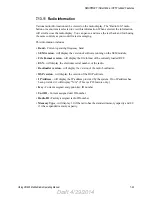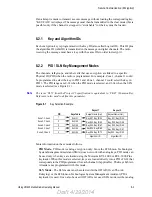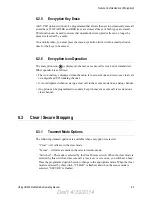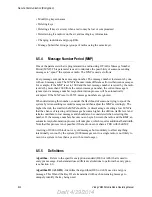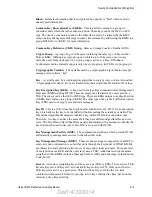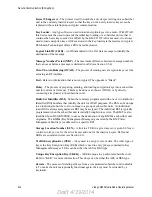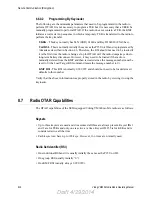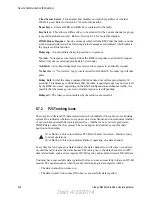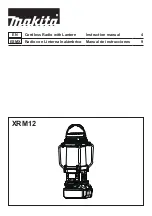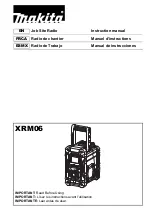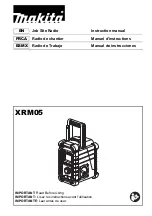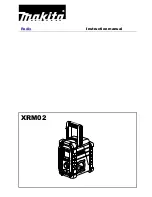
8-12
Viking VM600 Mobile Radio Operating Manual
Secure Communication (Encryption)
• Modifying keyset names
• Deleting keys
• Deleting all keys (zeroize) when a radio may be lost or compromised
• Determining if a radio is on the air and reading key information
• Changing individual and group RSIs
• Manage Subscriber Groups (groups of radios using the same keys).
8.5.4
Message Number Period (MNP)
One of the parameters that is programmed in a radio using OTAR is Message Number
Period (MNP). This parameter is used to minimize the possibility of someone sending
messages to “spoof” the system or radio. The MNP is used as follows.
Every message sent out has a message number. The message number increments by one
with each message sent. The MNP is the maximum difference allowed between messages.
For example, if the MNP is set to 1000 and the last message number received by the radio
is older by more than 1000 from the current message number, the current message is
ignored, and a message number resynchronization process will be automatically
attempted. If the MNP is set to 65535, message numbers are ignored.
When determining this number, consider the likelihood of someone trying to spoof the
system by retransmitting recorded messages and then adjust the MNP accordingly. The
higher the risk, the smaller the MNP should be. A disadvantage of setting a low MNP is
that the chance of rejecting valid messages becomes higher. In addition, traffic level and
terrain contribute to lost messages and should also be considered when selecting this
number. If the message numbers become out-of-sync between the radio and the KMF, an
automatic resynchronization process will take place, which requires additional bandwidth.
Note that this process is not possible if the radio does not share a TEK with the KMF.
A setting of 1000 will block out very old messages but is unlikely to affect anything
intentionally sent out by the system (1000 messages sent to a single radio is not likely to
occur in a system in less than a year with normal usage).
8.5.5
Definitions
Algorithm
- Refers to the specific encryption standard (DES or AES) that is used to
encrypt a message. Each standard uses different calculations to perform the encryption
(see Section 8.1).
Algorithm ID (ALGID)
- Identifies the algorithm (DES or AES) used to encrypt a
message. This ID and the Key ID are transmitted with each non-analog message to
uniquely identify the key being used.
Draft 4/29/2014
Summary of Contents for Viking VM600 Series
Page 10: ...viii Viking VM600 Mobile Radio Operating Manual Table of Contents continued Draft 4 29 2014 ...
Page 20: ...xviii Viking VM600 Mobile Radio Operating Manual Safety Information Draft 4 29 2014 ...
Page 108: ...6 32 Viking VM600 Mobile Radio Operating Manual Conventional Features Draft 4 29 2014 ...
Page 188: ...Index 4 Viking VM600 Mobile Radio Operating Manual Index continued Zones 4 16 Draft 4 29 2014 ...


